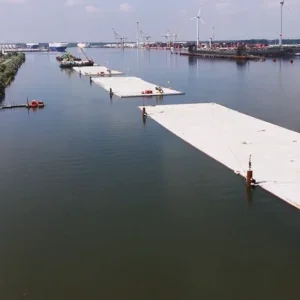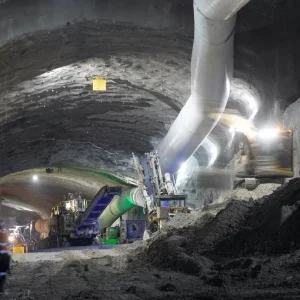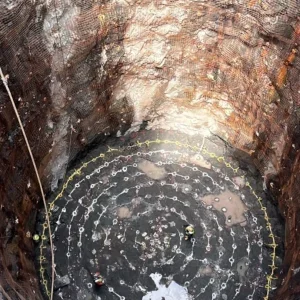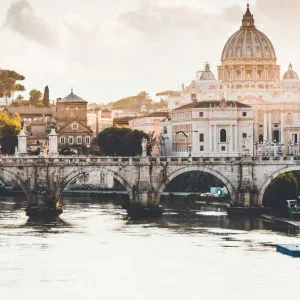The countries of Latin America appear to be in various states of stability, whether in terms of economics, politics or security. The old image of weekly revolutions has long gone. Increased stability allows the exploitation of natural resources and, perhaps as a result, brings increased expectations among the populations, many of which tunnelling can help fulfil.
Unlike some other parts of the world, few underground construction projects in Latin America are designed primarily for prestige rather than to meet real needs, and yet records are being broken to provide power, water, access to mineral resources, and to improve transport and hygiene.
Transport led North
Focusing on the more northern countries in Latin America and Central Caribbean, the biggest source of demand for tunneling comes from transportation. There are also notable sewer projects, and underground construction for hydroelectric projects.
Major metropolitan cities in Mexico, Panama and the Dominican Republic are developing subway systems. In the case of Panama City, Panama, and Santo Domingo, Dominican Republic, both cities are only working on the early stages of their systems. Mexico City has an established metro system, though with plenty more lines to build.
Panama
Compared to its northern neighbours, particularly the US, Panama has seen its economy strengthen, allowing it to invest in infrastructure projects. This reaps the benefit of further bolstering its economy by creating jobs, while improving the quality of life for its citizens.
Public finances in Panama have proven to be resilient to the global crisis, according to a report presented by Panama’s vice minister of economy, Frank De Lima. For example, revenues from the Panama Canal grew by 4.91 per cent from 2008 to 2009. This report, published in late 2010, found that transportation, among other sectors including telecommunications and tourism, spearheaded GDP growth.
The Greater Panama City Metropolitan Area (GPCMA) currently has a population of approximately 1.58 million inhabitants, and is expected to grow to 2.36 million by 2025. For transport, citizens rely heavily on buses as well private automobiles. A systematic overhaul was needed to avoid the collapse of vehicle traffic by 2015, according to Panama’s ministry of economics.
By 2014 the region hopes to welcome its first metro line. A consortium of Constructora Norberto Odebrecht, Fomento de Construcciones y Contratos (FCC) and Alstom won the USD 1.5bn contract, which includes 7km of tunnels and five underground stations. The rest of the 13.7km line will be constructed on viaducts with six aerial stations. Two Herrenknecht EPBMs of 9.6m diameter are excavating the tunnels.
By 2035, the city plans to have an entire underground transport system—the pet project of President Ricardo Martinelli. At an acceptance ceremony for the Line One TBMs at Herrenknecht’s facilities in Schwanau, Germany, Martinelli was already announcing the tender for Line Two of the city’s metro.
In Santo Domingo, the Dominican Republic’s government transport authority, called Opret, also has a master plan for phased construction of a metro system. Line One started commercial operations in January 2009, with the service running north and south.
Line Two, which will run east to west across the city, entirely underground, is being delivered in two phases. Opret expects the first phase of 11km in length to open in 2012.
Adding capacity
Mexico City has 11 metro lines already in operation, with the development of the initial lines dating back to the 1960s. Line 12 will run for a total of 25km when it opens next year, and 8.7km are being tunnelled. The consortium of Ingenieros Civiles Asociados (ICA) with Grupo Carso and Alstom is using a Robbins EPBM to construct the 10m-diameter subway—the first ever to be used on one of the city’s metro line projects. The final breakthrough on Line 12 is expected in late 2011 or early 2012, according to Robbins.
The city has a master plan, developed back with the first metro lines in the 1960s, and it lays out the basis for five more lines to be built. This planning document originally called for the entire Line 12 to be built by cut and cover construction, which would pose a massive time constraint, widespread disruption and exceed the city’s budget. Down the road, as the city— one without much underground infrastructure—finesses its plans for future metro development there is likely to be even more demand for tunnelling.
South America
South of the Canal, the tunnelling rush is led by the larger countries and economies, namely Brazil, Argentina and Chile, although Colombia, Ecuador and Venezuela also have major projects.
In terms of individual projects and contracts, the busiest end use sector is metro construction, with Sao Paulo and Buenos Aires, among others, engaged in major metro network expansion schemes, elevated and at surface level as well as underground. The need is most marked in megacities like Sao Paulo where road transportation could take several hours to pass from one side of the city to the other, decreasing business efficiency and inconveniencing the population. It is arguable whether better mass transit schemes tend to increase urban sprawl, but at least they can deal with more immediate problems.
Transport in Brazil has been brought into strong focus with the award of the 2014 World Cup. Fifa authorities have expressed concern about apparent delays in the development of some infrastructure projects including the long-term dream of South America’s first high-speed rail link between Sao Paulo and Rio de Janiero which will now miss the showpiece event. For the third time bidding has stalled – this time there were no bidders. Potential suppliers were put off by unrealistically low estimates and a frequently tumultuous political background. The project includes around 90km of tunnels and still claims to be on track.
Hydropower
South America has long been associated with major hydroelectric projects with its usual abundance of water and topographical differences in elevation. But the region’s appetite for power has never been greater, especially with the increase in world prices for fossil fuels that often have to be imported. Beyond the economic case, environmental considerations in reducing dependence on carbon–based power also make hydropower attractive if suitable schemes can be devised. Underground construction increases the options for designers.
More efficient long-distance travel is also a demand to reduce the dependence on seaborne heavy freight via the Panama Canal or Cape Horn. In this, mountain ranges, and in particular the Andes, have been historical barriers. In efforts reflecting, to some extent, the development of trans- Alpine travel in Europe, better rail and road routes are being driven through this major range, including base tunnels like that planned for the Buenos Aires to Valparaiso railway.
Mining in South America ranges from small ‘artisan’ and largely unregulated workings to some of the biggest holes dug in the world. The bigger enterprises or mining regions have long been a stimulus for tunnelling for railways as well as for the mining itself. Now, with the increased international demand for raw materials, particularly from Asia, some of the richest deposits exploited by opencast mining are being developed underground at greater depths. This can often necessitate major tunnelling projects as well as shaft sinking to gain access to the deeper reserves. The development of a new, deeper level in Chile’s El Teniente copper mine is a prime example of this.
Environment
In recent decades South America has become a target for much environmental concern, particularly from outside of the region, but there are strong indications that authorities are now paying attention to these concerns, particularly as funding bodies often have environmental criteria written into loan agreements. Even so, mining and hydro projects in particular have become targets for environmental campaigners, such as with Brazil’s Sao Francisco water diversion project, even though it should benefit many farmers.
Ruta 150 project through the Ishigualasto Mountains in Argentina Preparatory work on Panama City’s Line One







